Related Research Articles

Lilian Whiting was an American journalist, editor, and author of poetry and short stories. She served as literary editor of the Boston Evening Traveller (1880–1890), editor-in-chief of the Boston Budget (1890–93), and afterward, spent much of her time in Europe. Whiting was the author of The World Beautiful, From Dreamland Sent, a book of poems, A Study of the Life and Poetry of Elizabeth Barrett Browning, A Record of Kate Field, The World Beautiful in Books, Boston Days, Florence of Landor, The Outlook Beautiful, Italy, the Magic Land, Paris the Beautiful, and others.

Mary Augusta Wood-Allen was an American doctor, social reformer, lecturer, and writer of books on health and self-improvement for women and children. Through her lectures and writings she was a voice for the social purity movement.
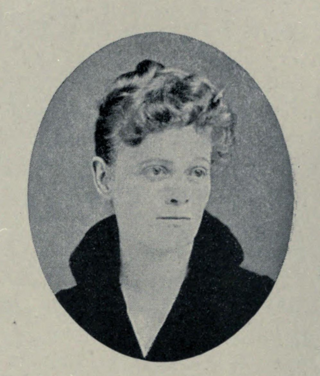
Kate Tupper Galpin was an American educator and woman's club leader. For several years President of the Woman's Parliament of Southern California, Galpin was a natural teacher. Before instituting her classes in Southern California, she occupied the position of Professor of Pedagogy in the University of Nevada. During the five years of her residence in California, Galpin played an active part in the club life of the State, occupied many positions of honor, and through her classes in Shakespeare and Current Topics, conducted in Los Angeles and numerous outlying towns, contributed largely to the educational and intellectual life of the community. She gave five addresses before the Women's Congress at the Columbian Exposition, and lectured upon the suffrage platform throughout California.

Anne Eugenia Felicia Morgan was an American professor, philosopher, writer, and game inventor from the U.S. state of Ohio. Remembered as a philosopher of rare ability, she united a poet's insight with logic, developing a system of thought marked by originality and power. As an instructor, she led students to do their own thinking, aiming rather to teach philosophizing than to impose any dogma of human opinion.

Harriet Thayer Durgin (1843–1912) was a pioneering 19th-century American artist from the U.S. state of Massachusetts, who specialized in water colors and sketches of landscapes and still-lifes focused on botanical motifs. After studying in Paris, where she received special notice in the Salon of 1886, she shared a studio in Copley Square, Boston, with her sister, the muralist, Lyle Durgin. Durgin is remembered as one of the foremost American artists of the floral-painting genre during the late 19th and early 20th centuries.
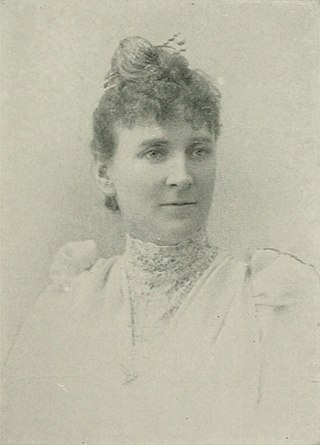
M. Lyle Durgin (1845-1904) was a 19th-century American artist from the U.S. state of Massachusetts, who specialized in portraiture and murals. A graduate of New Hampton Institute, New Hampshire, she studied art in Paris where she exhibited in the Salon. After returning to the US, she shared a studio with her sister, Harriet Thayer Durgin, in Copley Square, Boston. Durgin is remembered for designing and executing the murals at the First Congregational Church of Detroit, Michigan.

Kate Parker Scott Boyd was a 19th-century American artist, journalist, and temperance worker from the U.S. state of New York. She won a number of medals and prizes in the Centennial Exposition of 1876.

Sara Miranda Maxson Cobb was a 19th-century American art teacher, artist, and writer from the U.S. state of New York. She served as director of the Art School of the Maine Wesleyan Seminary and Female College at Kents Hill, Maine, and taught drawing at Colorado State University.

Allegra Eggleston was a 19th-century American artist from the U.S. state of Minnesota. She occupied herself as a woodcarver, portrait painter, and book illustrator. As an illustrator, she collaborated with her sister, Elizabeth Eggleston Seelye, and her father, Edward Eggleston, on a number of books including The story of Columbus (1892), The story of Washington, and The Graysons.
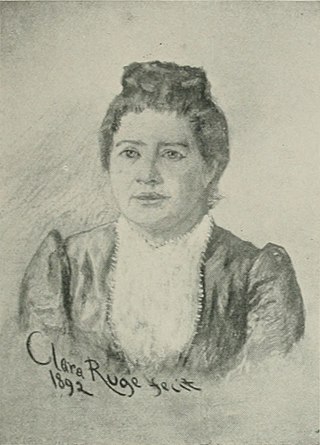
Alice Heighes Donlevy was a British-American artist and writer on art, who specialized in wood engraving and illumination. She served as the art editor of Demorest's Magazine.

Alice Hirschberg was a British-born American painter and illustrator. She worked in water-color and black-and-white, as well as genre subjects and landscapes in oils.

Mabelle Biggart was an American educator, dramatic reader, preacher, and writer. In 1890, Biggart was in charge of the department of elocution at the Chautauqua assembly of Glen Park, Colorado, and that she was giving exercises illustrating the Delsarte System. Around the same time, she had been instrumental in starting the Polytechnic Institute and Woman's Athletic Club of Denver, intended to aid women to gain health, strength, and beauty. She had also assumed charge of a "Polytechnic Department" in the Denver NewsLetter, devoting the space to physical culture, science, and literature. She wrote articles for various publications including, "A Woman that is a Woman", "List to the Voice!", "Newfoundland", "Where is the New Woman?", "Dr. Grenfell's Labrador Mission", and "On the Painted Desert".

Helen M. Winslow was an American editor, author, publisher, and journalist. She began her work on Boston papers. Winslow served as dramatic editor on The Beacon, 1891–97; editor, Woman's Club Department, Boston Transcript, 1893–98; editor, Woman's Club Department of the Delineator, 1897, and again 1912; editor and publisher, The Club Woman, 1897-1904; and she was the publisher of the Official Register of Women's Clubs in America from 1897. She was the author of Salome Sheppard, Reformer. 1893; Concerning Cats, 1900; Concerning Polly, 1902; Literary Boston or To-day, 1902; The Woman of To-morrow, 1905; The President of Quex, 1906; Peggy at Spinster Farm, 1908; A Woman for Mayor, 1910; The Pleasuring of Susan Smith, 1912; and At the Sign of the Town Pump, 1913. She collaborated with Frances Willard in Occupations for Women, and with Marie Wright in Picturesque Mexico.
Estelle Mendell Amory was an American educator and author. She is better known as a writer by her maiden name, Estelle Mendell. She published a variety of domestic articles, short stories for children, essays on living themes, and occasional poems.
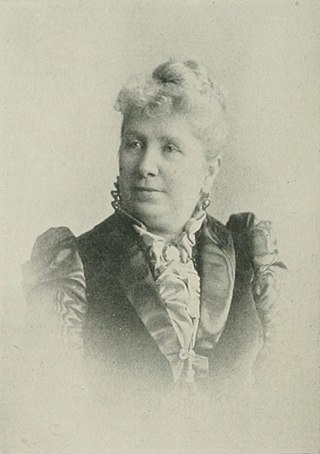
Jennie de la Montagnie Lozier was an American physician. At the age of nineteen, she began to teach, becoming an instructor in languages and literature in Hillsdale College. Returning to New York City in 1872, she married Abraham Witton Lozier, Jr., the son of Clemence Sophia Harned Lozier, who was the founder and dean of the New York Medical College and Hospital for Women. Here, she studied medicine and after receiving her medical degree, became a professor of physiology. She served on the hospital staff for twelve years and retired from professional work in 1890 to devote herself to her domestic, social, and educational interests. She was a delegate to the International Homoeopathic Congress in Paris in 1889 and was president of Sorosis Club from 1891–94.
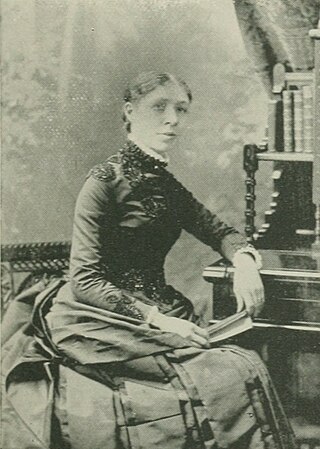
Esther E. Baldwin was an American missionary, teacher, translator, writer, and editor of the long nineteenth century. Known as "Chinese Champion", she understood the religious and political problems of China, and the Chinese people, as perhaps no other woman in this country did at that time. She labored constantly to bring about a better understanding between the two nations. Baldwin served as president of the New York Woman's Missionary Society for two decades.

Minnie Mary Lee was a pen name of Julia Amanda Sargent Wood, a 19th-century American sentimental author, of poems, stories, sketches and novels, who sometimes also wrote as Mrs. Julia A. A. Wood. She began writing very early in life, but did not publish in book form until she was in her forties. The Heart of Myrrha Lake, Or, Into the Light of Catholicity ; Hubert's Wife: a Story for You ; The Brown House at Duffield: a Story of Life without and within the Fold ; and The Story of Annette and her Five Dolls: Told to dear little Catholic Children were her published works. A convert to Roman Catholicism, Wood's novels were on Catholic themes.

Mercedes Leigh was an American actress. She was widely known by her stage name, Mercedes Leigh, which she chose when she began her professional career. Her contemporaries were Mary Haviland Sutton and Mary C. Francis.
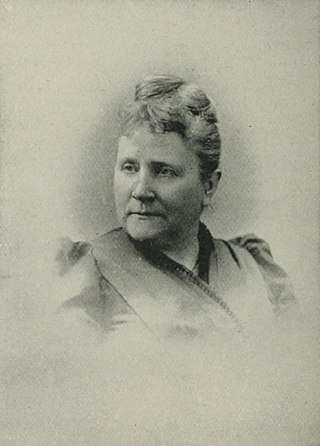
Margaret B. Peeke was an American traveler, lecturer, and author of the long nineteenth centurys. In her early life, Peeke taught at a public school and her own private school. Later, she taught Hermetic philosophy in New York City, Chicago, Boston, Washington, D.C., and elsewhere (1893–98); visited Hermetic societies abroad (1898–99); and had an assembly of followers in Sandusky, Ohio. She served as Inspectress-General in the U.S. of the Martinist Order of France, and as treasurer of Light of France, Hermetic Society of France. She was a member of the Baháʼí Faith and of the Rose Cross Martinist Fraternity.

Rosa Kershaw Walker was an American author, journalist, and newspaper editor of the long nineteenth century. She was one of the best-known literary women in St. Louis, Missouri, and a pioneer woman journalist of that city.
References
- 1 2 Mitchell, Sally. "Porter, Rose". Encyclopedia.com. The Gale Group Inc. Archived from the original on June 9, 2019. Retrieved June 9, 2019.
- 1 2 The Annual Library Index. Office of the Publishers' Weekly. 1906. p. 361. Retrieved 23 October 2022.
 This article incorporates text from this source, which is in the public domain .
This article incorporates text from this source, which is in the public domain . - ↑ Willard & Livermore 1897, p. 583.
- ↑ Faust 1983, p. 159.
Bibliography
- Faust, Langdon Lynne (1 January 1983). American Women Writers: A Critical Reference Guide from Colonial Times to the Present. Ungar. ISBN 978-0-8044-6165-8.
- Willard, Frances Elizabeth; Livermore, Mary Ashton Rice (1897). American Women: Fifteen Hundred Biographies with Over 1,400 Portraits: A Comprehensive Encyclopedia of the Lives and Achievements of American Women During the Nineteenth Century. Mast, Crowell & Kirkpatrick. p. 583.
Attribution
 This article incorporates text from this source, which is in the public domain : F. E. Willard & M. A. R. Livermore's American Women: Fifteen Hundred Biographies with Over 1,400 Portraits: A Comprehensive Encyclopedia of the Lives and Achievements of American Women During the Nineteenth Century (1897)
This article incorporates text from this source, which is in the public domain : F. E. Willard & M. A. R. Livermore's American Women: Fifteen Hundred Biographies with Over 1,400 Portraits: A Comprehensive Encyclopedia of the Lives and Achievements of American Women During the Nineteenth Century (1897)